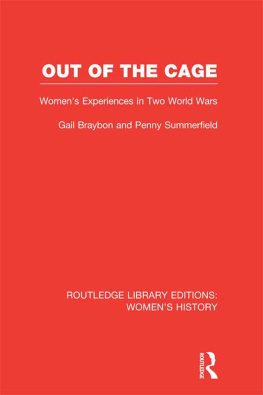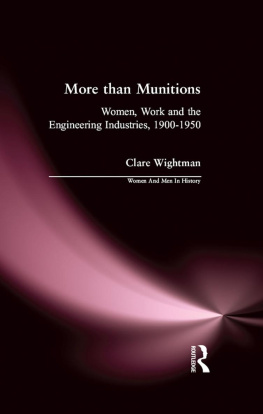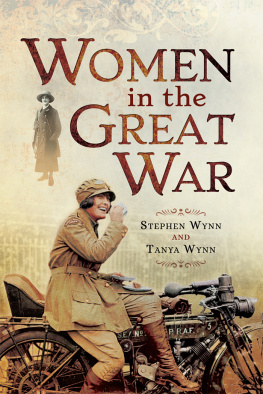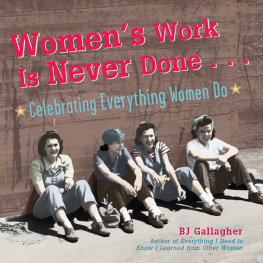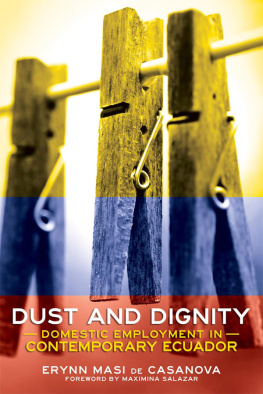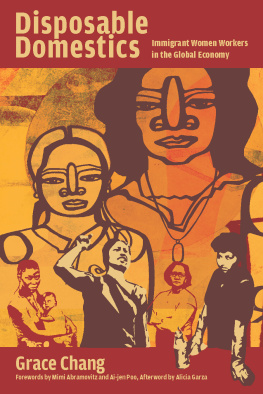Routledge Library Editions: Womens History
Women Workers in the First World War
First published in 1981
This edition first published in 2013
by Routledge
2 Park Square, Milton Park, Abingdon, Oxon, OX14 4RN
Simultaneously published in the USA and Canada
by Routledge
711 Third Avenue, New York, NY 10017
Routledge is an imprint of the Taylor & Francis Group, an informa business
1981, 1989 Gail Braybon
All rights reserved. No part of this book may be reprinted or reproduced or utilised in any form or by any electronic, mechanical, or other means, now known or hereafter invented, including photocopying and recording, or in any information storage or retrieval system, without permission in writing from the publishers.
Trademark notice: Product or corporate names may be trademarks or registered trademarks, and are used only for identification and explanation without intent to infringe.
British Library Cataloguing in Publication Data
A catalogue record for this book is available from the British Library
ISBN: 978-0-415-53409-3 (Set)
eISBN: 978-0-203-10425-5 (Set)
ISBN: 978-0-415-62270-7 (Volume 6)
eISBN: 978-0-203-10421-7 (Volume 6)
Publishers Note
The publisher has gone to great lengths to ensure the quality of this reprint but points out that some imperfections in the original copies may be apparent.
Disclaimer
The publisher has made every effort to trace copyright holders and would welcome correspondence from those they have been unable to trace.
Women Workers in the First World War
GAILBRAYBON
First published in 1981 by Croom Helm Ltd
Reprinted in paperback 1989 by Routledge
11 New Fetter Lane, London EC4P 4EE
29 West 35th Street, New York, NY 10001
First published in the USA 1981 by
BARNES & NOBLE BOOKS
1981, 1989 Gail Braybon
Printed in Great Britain
by Billings and Sons Limited, Worcester
British Library Cataloguing in Publication Data
Braybon, Gail
Women workers in the First World War 2nd ed
1. Great Britain, working class women.
Employment. Social aspects history
I. Title
305.430941
Library of Congress Cataloging-in-Publication Data
Braybon, Gail.
Women workers in the First World War/Gail Braybon.
p. cm.
Originally published: London: Croom Helm: Totowa. N.J.: Barnes & Noble, 1981.
Bibliography: p.
Includes index.
1. WomenEmploymentGreat BritainHistory20th century.
2. WomenEmploymentPublic opinionHistory20th century.
3. Public opinionGreat BritainHistory20th century. 4. World
War, 19141918Women. 5. World War, 19141918lnfluence.
I. Title. II. Title: Women workers in the 1st World War.
HD6135.B725 1989
331.4094109041dc20
8910060
CIP
ISBN 0-415-04201-1
To:
My parents, my dogs, Alan and my friends
Contents
Acknowledgements
My thanks go to all those who have read and commented on the manuscript of this book, and to the people with whom I have discussed particular important issues, including Antonia Ineson, Penny Summerfield and Stephen Yeo. I would also like to express my gratitude to staff of the various libraries I have visited, and to the Twenty Seven Foundation, which provided me with a grant for travelling expenses.
Preface to the Paperback Edition
This book was originally written soon after I had finished my thesis on the same subject. At the time, I was most interested in mens attitudes to women entering war work, and the standard expectations and prejudices these displayed, and so there is very little here about the views of the women themselves. Since that time, I have been able to fill some of that gap by writing Out of the Cage (Pandora, 1987) with Penny Summerfield, which explores womens own feelings about war, work, and employment in the First and Second World Wars, using diaries, typescripts, and interviews. But Out of the Cage itself was not designed to be a re-write of our own earlier books about the wars, and lacks the kind of analysis of government, trade union, and employer attitudes found in Women Workers in the First World War. Ideally, this book should be read in conjunction with both Penny Summerfields book, Women Workers in the Second World War, also published in paperback by Routledge, and Out of the Cage. Together, they give a rounded picture of both wars.
At the end of Women Workers in the First World War I wrote that I hoped that other writers would take up some of the subjects mentioned here, and provide more specialised coverage of areas I could mention only briefly. Although womens history is a thriving area, and much interesting research is going on, unfortunately much of this never reaches publication. I have used only a fraction of the original material available, and the war is still a particularly rich area for further study.
Preface
This book does not pretend to be a full history of womens work during the First World War. To begin with, I am mostly concerned with the position of working-class women, and thus there is no information on the work of VADs, members of the Land Army, clerks or civil servants, who were primarily middle-class although it should be evident that many comments made by contemporaries about womens work and their domestic role were aimed at women in general. In addition, although there is some description of womens industrial work, my major interest is in the public and semi-public debates which revolved around such work. What I am trying to show is the remarkable consistency of male attitudes towards womens work, even in the exceptional time of war, and the way in which such attitudes affected the women themselves.
My work here is a development of an MPhil thesis, and although I have, in the last two years, been able to widen the scope of my work considerably, I have still not been able to use all the sources I would have liked, particularly material in the PRO and Imperial War Museum. I have not been funded in my continuing research, and this has been a handicap: it is, indeed, the main reason why I cannot expand this book further. I am very grateful to the Twenty Seven Foundation for the help with travelling expenses during the last few years; without such aid the book would certainly never have been written. Critics of this work will notice many omissions in the source material; I have not been able to do any local studies, which I feel would have been very useful, or follow through union policy in detail between 1914 and 1922, or look at the approach of suffragettes and suffragists as fully as I would like to have done. Although some work has been done in these fields by other writers, there is still much more for historians to do. This book has to be seen as a broad study, and one which has incorporated as many different kinds of source material as possible. I have used government reports and the evidence presented to wartime committees, books of the time, trade union and trade journals, some feminist journals, and newspapers of all kinds. Attitudes towards womens industrial work and opinions about their domestic roles were expressed readily in these, and they represent the view of a broad cross-section of society; these attitudes are what concern me here, as they had a devastating effect upon working-class women after the war, when the public applause for their marvellous work died away.


